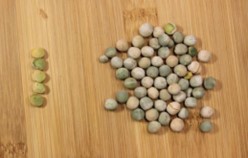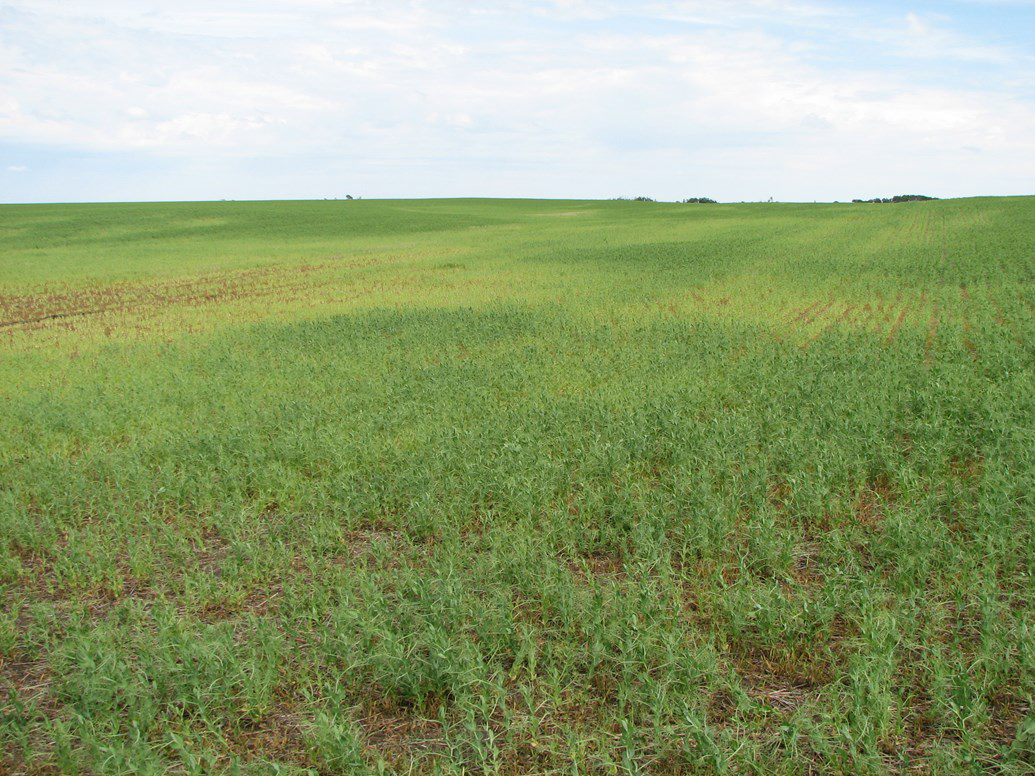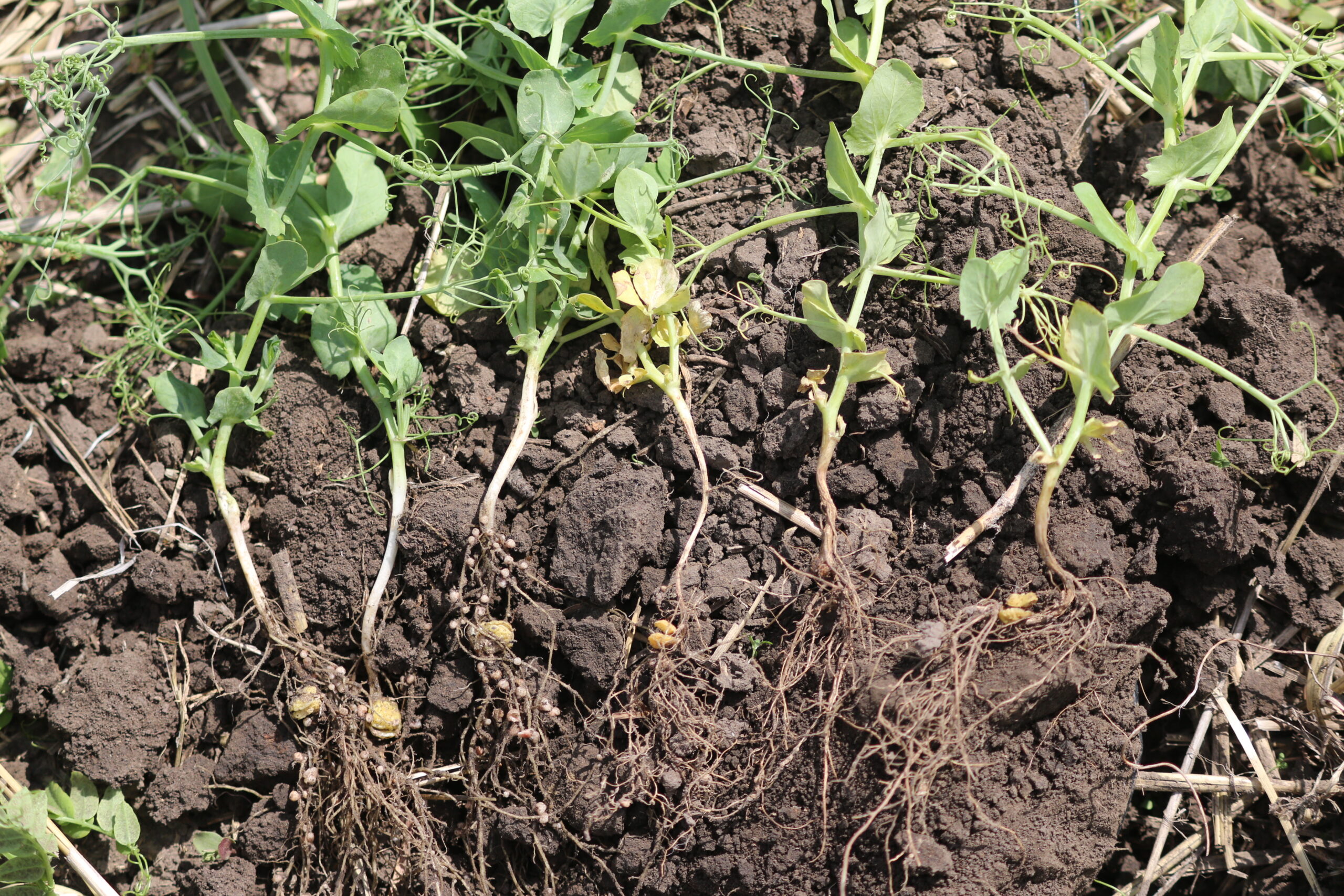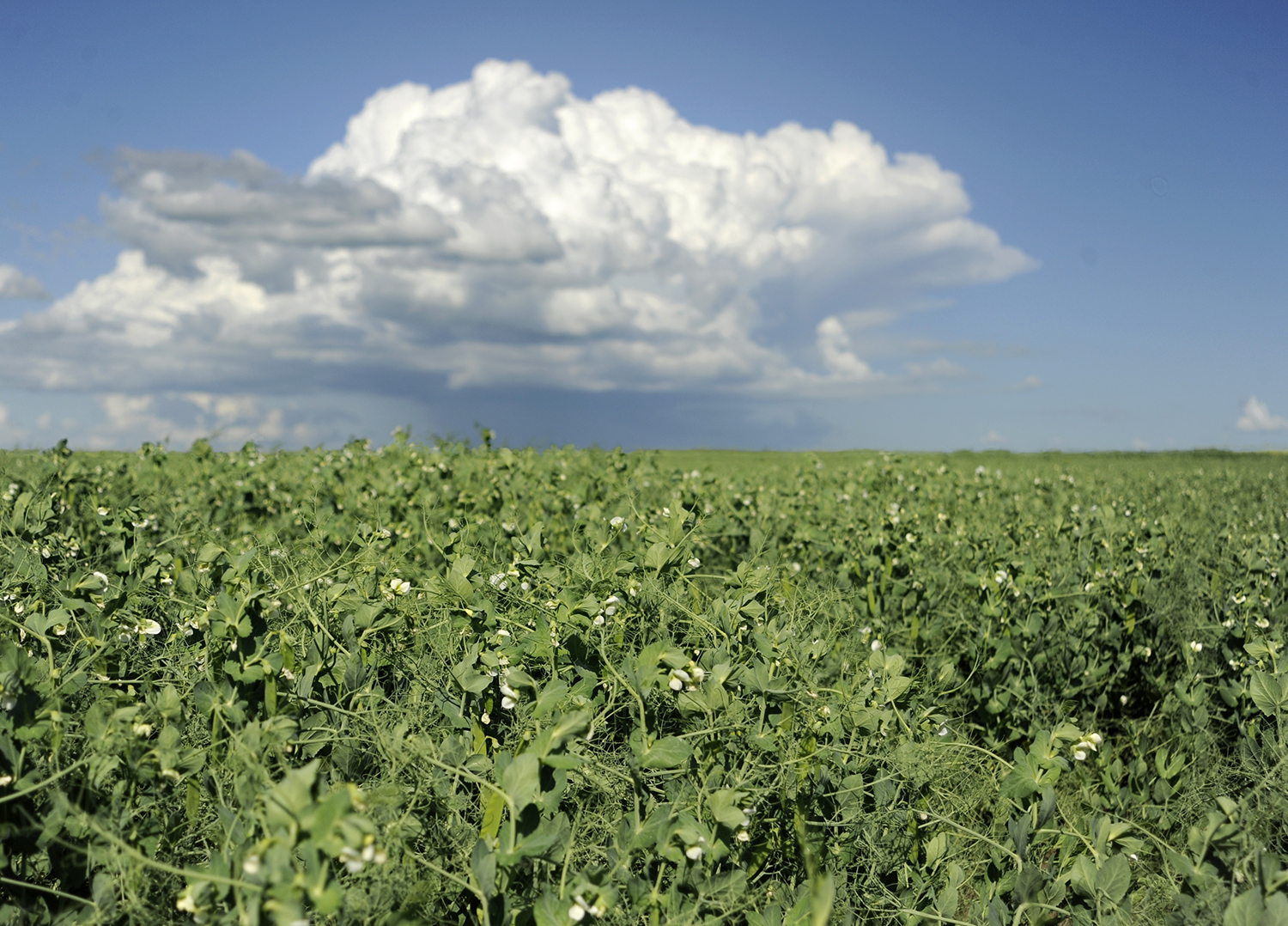Sherrilyn Phelps, Agronomy and Seed Program Manager, Saskatchewan Pulse Growers

Green peas are recognized and marketed for their uniform green cotyledon color. The main pigment responsible for the green color is chlorophyll. Under certain conditions the chlorophyll is degraded by enzymes and results in a lightening of the green color which is considered bleaching. Under complete degradation of chlorophyll, the seed becomes yellow. Within a sample there can be a range of bleaching from lighter green to a gradient of green to yellow, to fully yellow. Hence there can be confusion at grading time as it may appear that the green peas are mixed with yellow off-types.
Dr. Tom Warkentin with the University of Saskatchewan’s Crop Development Centre (CDC) suggests growers can minimize bleaching by choosing varieties that have better tolerance to bleaching. As bleaching tolerance is a high priority in the breeding program objectives, most new varieties have good tolerance to bleaching. Warkentin suggests that CDC Tetris and Cooper are not quite as tolerant to bleaching as others and would be rated as fair.
Factors that affect the amount of bleaching have been evaluated and it is the combination of bright sunlight and moisture at maturity that increases the risk of bleaching. The longer they are in the field, the higher the risk of moisture combined with bright sunlight which can result in increased amount of bleaching. Harvesting green peas as soon as possible is also another tool to minimize bleaching.
In terms of the effect on seed quality, bleaching is more cosmetic and does not affect germination or vigor of the seed. However buyers do not like bleached seed as it affects the look of the product. Markets prefer the nice green color and will discount samples that show significant bleaching.
Canadian Grain Commission standards consider green peas to be bleached if one-eighth or more of the surface of the cotyledon is bleached to a distinct yellow color which is marked contrast to its natural colour. The tolerance for bleached green peas is two per cent for No. 1 Canada and three per cent for No. 2. Samples with greater than five per cent bleached are considered Sample grade and discounted prices can be expected.


